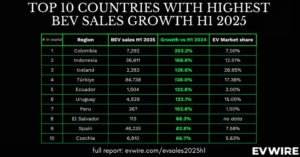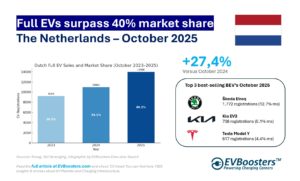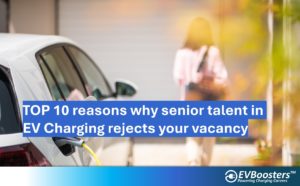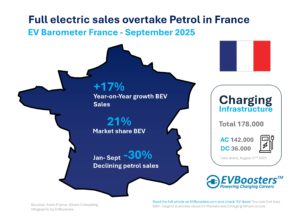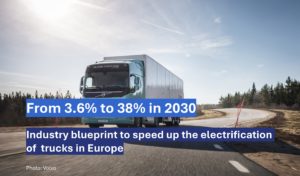Challenges for multifamily housing residents
Nearly one-third of U.S. households live in multifamily housing—places like apartment buildings, condos, and townhouses. These residents, many of whom are renters, often lack the convenient and affordable access to EV charging that homeowners enjoy. According to the report, between 84% and 94% of EV drivers in single-family homes can charge their vehicles at home. In comparison, less than half of those living in apartments have similar access. This lack of charging infrastructure makes it harder for renters, who are more likely to be lower-income and people of color, to make the switch to electric cars.
Barriers to equitable EV adoption
This gap in access to charging remains a major barrier despite growing interest in EVs among all demographic groups, including Black, Latino, and Asian drivers. Renters make up more than a third of U.S. households and are often less affluent than homeowners. Many are eager to drive EVs to save on fuel costs and reduce their environmental impact, but the absence of home charging keeps them tied to gas-powered vehicles. Meanwhile, landlords may be hesitant to invest in installing EV chargers if they don’t see a direct financial benefit, creating a “split incentive” that limits progress.
Public charging access: Key findings
Energy Innovation’s report zeroes in on public charging options in 69 U.S. cities, highlighting the uneven access to these stations. It ranks cities based on the number of multifamily housing units compared to the number of public Level 2 and Level 3 chargers. No city earned a “best in class” rating, which underscores the widespread need for more infrastructure. The findings reveal that even top-ranked cities like San Jose, California, and Seattle, Washington, have over 40 MFH units for every public charger. This means that even these relatively well-served cities have room to improve. On the other end of the spectrum, places like Milwaukee, Wisconsin, and Cape Coral, Florida, have more than 500 MFH units for each available charger, making it much harder for residents there to rely on public charging.
The “Chicken-and-Egg” dilemma
The report also highlights a “chicken-and-egg” problem that is holding back EV adoption. In areas where public charging is scarce, fewer people buy EVs. This lower demand then discourages investments in more charging infrastructure. As a result, both private companies and local governments may hold off on building new stations, waiting for a rise in demand that never comes. This challenge is especially acute in areas with many MFH units, where residents rely heavily on public charging because they lack the option to charge at home.
High costs for retrofitting multifamily housing
Adding to the problem, most existing MFH buildings would need costly upgrades to accommodate EV chargers, including new wiring and other electrical work. Newer buildings are more likely to include EV-ready infrastructure, but the majority of multifamily housing in the U.S. was built before EVs became popular and lacks these features. This means that even with efforts to increase the number of public charging stations, many renters will continue to face barriers to owning an electric car.
Policy recommendations to close the gap
To address these issues, the report suggests that state and local governments focus on making new multifamily buildings EV-ready from the start, with building codes that require charging infrastructure. This could help ensure that the next generation of housing meets the needs of future EV drivers. Financial incentives for property owners could also play a crucial role, helping to offset the costs of installing chargers. Federal and state programs already offer some support for these investments, but more targeted efforts could make a bigger impact.
Expanding public charging access
Expanding access to public chargers is another key step. Cities could install more curbside or streetlight-mounted chargers in areas with many multifamily units, providing more options for those without home charging. Programs like those in Kansas City, Missouri, and Melrose, Massachusetts, have already shown how this can work, using existing infrastructure to create charging stations. Additionally, “right-to-charge” laws can empower renters to request EV charging installations, preventing property managers from blocking access. States like California and New York have adopted these laws, allowing more renters to consider switching to electric vehicles.
Collaboration is key for equitable access
The report stresses that creating equitable access to EV charging requires more than policy changes. It calls for collaboration among local governments, utilities, property owners, and community leaders. Engaging residents in the planning process ensures that the solutions meet their needs, especially in communities that have historically been left out of infrastructure improvements.
Looking forward: A roadmap to equitable EV adoption
The transition to clean transportation in the U.S. is at a critical point. Federal and state incentives have made EVs more affordable, but the availability of reliable charging infrastructure will determine whether this shift benefits everyone. Addressing the disparities in charging access is crucial to making sure that multifamily housing residents—many of whom are lower-income or people of color—aren’t left out of this change.
Energy Innovation’s report makes it clear that more action is needed to close the charging gap. Without it, progress toward the nation’s climate goals could stall, and existing inequalities could deepen. By focusing on expanding public charging and ensuring that new developments are ready for EVs, cities can create a more sustainable future for everyone, regardless of where they live.
For many Americans, the choice to switch to an EV will come down to whether they can charge it easily and affordably. Making sure that residents of multifamily housing have the same opportunities as homeowners isn’t just about technology—it’s about ensuring fairness and protecting the environment for the long term.
Source: Energy Innovation


